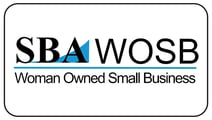I am a big fan of the Chad & Cheese podcast.
They like to bill themselves as “punching the recruiting industry right where it hurts, with breaking news, brash opinion, and loads of snark.” Beyond the humor, Chad & Cheese are a great resource for what is trending in the talent-acquisition space.
Chad & Cheese recently had a podcast interview with the leaders of TNG and Furhat Robotics about their new interviewing robot, Tengai. The robot is designed to help remove unconscious bias from interviewing and provide companies an affordable screening tool for first interviews.
The future is here, and her name is Tengai.
The official press information about Tengai is:
TNG, a Swedish recruitment agency specializing in unbiased recruitment, and Furhat Robotics have partnered to create Tengai, an unbiased social job interview robot that will perform structured interviews with anonymous candidates, focusing on soft-skills and personality traits.
TNG and Furhat say that Tengai is being developed to assist recruiters and hiring managers at the early stages of the recruitment and selection process. Using Tengai makes it possible to invite more job-seekers into the hiring process, screening for potential, and allowing hiring managers to make better-informed decisions, based on facts, not unconscious bias.
Tengai, with its robotic voice and look, can be a little unsettling. Once I got beyond the initial shock, however, I saw some exciting potential in the area of removing the unconscious bias from the selection process.
TNG published eight facts that support why they believe that their Tengai robot can make the hiring process better:
- Eliminating the first-impression bias where candidate judgments are made within the first seven seconds.
- Removing the male-bias perception of men being more competent.
- Taking body language out of the equation.
- Slowing down the hiring process (this is a good thing). TNG reports that a study with 2,000 managers showed that 33% of recruiters decided who they wanted to hire within only 90 seconds, making that first minute and a half the most critical moment during the whole job interview. Additional data show that 60% of interviewers decide on a candidate within 5-15 minutes.
- Factoring out social cues like dress code and handshakes.
- Taking eye contact and voice out of the evaluation process and only focusing on the candidate’s answers.
- Removing racial and ethnic bias.
- Taking out the interview-position bias. With Tengai, they believe that it will no longer matter whether you are the first candidate being interviewed (lowest chance of success) or the fourth candidate (highest probability of success).
Will Tengai make interviewing less biased and lead to better hires? I believe Tengai is an exciting first step in developing technology that will help to remove so much of the bias that negatively clouds hiring decisions. The TNG/Furhat technology is a positive first step for communities of color and people with physical disabilities. Hopefully, this will give them a fair chance.
Here is a YouTube video to show you what Tengai is all about:
I will also have to temper my optimism with the reality that removing bias (unconscious and conscious) will not wholly happen with the introduction of Tengai in the workplace.
When we blithely train algorithms on historical data, to a large extent we are setting ourselves up to merely repeat the past. We’ll need to do more, which means examining the bias embedded in the data.
Cathy O’Neil – Author of Weapons of Math Destruction: How Big Data Increases Inequality and Threatens Democracy
As we have read in the news, it is hard to remove bias when the software developer (a human) comes with their own bias. I also see that Tengai can be a useful candidate screening tool, but each of the candidates will have to eventually do in-person interviews with managers who will come with their own set of views and opinions.
Welcome to the new world of work.




